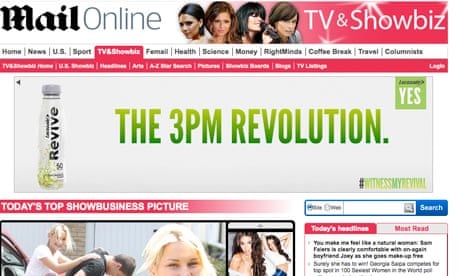Almost 20 years ago, on 27 October 27, 1994, the first banner went live on hotwired.com. For over four months, 44% of those who saw it clicked on it.
Because I wrote that banner, I'm often asked why it worked so much better than today's banners, which get clicked by only four out of every 10,000 people who see them. Expressed another way, why did that first banner generate more clicks with 10 impressions than the average banner today generates with 10,000? What have we done to destroy one of the most effective forms of advertising ever invented?
As you'll see, that first banner had three advantages over modern digital ads: it was part of an integrated marketing campaign; it was a great experience (as opposed to being a mere message); and it was created with only good intentions toward consumers.
The importance of integrated marketing
For two years prior to the debut of the banner, our client, AT&T, had run an ad campaign focused on futuristic technological wonders. TV spots showed a woman at a video phone talking to her infant on the screen, and asked: "Have you ever tucked your baby in? From a phone booth?" Other spots asked if you ever paid tolls without stopping your car, navigated using a map projected on a dashboard screen, or borrowed books from libraries 3,000 miles away. All ended with the same promise: "You will."
With the hindsight of 20 years, "you will" might feel like a vague promise, but AT&T's campaign represented about $50m in annual spending on TV, radio and print. Consumer awareness of the campaign ran high, and it's not surprising that the banner aroused curiosity. Compare that with many banner and TV campaigns created by disconnected agencies operating in silos, and banners today have little hope of gaining a boost from offline spending.

The importance of experiences over messages
Today, all the promises made in the You Will campaign have come true. But in 1994, AT&T's message seemed so fantastical as to be almost irrelevant. Our client asked us to create a "you will" experience, and make it come true immediately. They asked us to create an experience that would demonstrate to consumers the transformative power of the internet, and AT&T's ability to help them take advantage of it.
Knowing that AT&T's banner would appear in the arts section of hotwired.com, and knowing the magical ability of the internet to transport people to places they might not otherwise experience, we decided to create a virtual tour of the world's greatest museums, including the Louvre, the Library of Congress, and the Andy Warhol Museum. Despite the fact that I had been part of the team that thought of the idea, the experience still amazed me. I had never been to France, but there I was, looking at the Mona Lisa. Then I went to Pittsburgh and looked at Warhol's work.
Sure, the quality would have been better had I simply bought a coffee table book. But I had something more important (to me) than quality. I had control. Clicking on a link back then felt like the equivalent of saying, "Open Sesame." I had the power to make my own wishes come true. Does anyone spend time today trying to delight consumers with fantastic, transformative experiences? I don't think so.
Banners in 1994 v banners in 2013
Doing good was easy in 1994. There were only six advertisers in the entire world that lined up for HotWired. The supply of creative talent far outstripped advertiser demand. For about two years many of us in digital advertising created some of the most amazing experiences of our careers.
Seemingly overnight, however, the world caught on. Billions of dollars and thousands of advertisers flooded the web. The industry dug deeper and deeper into a talent pool that could not grow with demand, until speed and low cost replaced talent and quality as the most important criteria for success. Since then, hundreds of trillions of rotten, crappy banner experiences have taught us that even looking at the right hand column of a web site is dumb.
Still, we've yet to learn our lesson. In a practice known as programmatic buying, computers have replaced people in media buying, so that we can target our crappy ads better, and milk every ounce of ROI out of them.
The first lesson we learn in marketing 101 is to put the customer first. I know I speak for hundreds of people when I say that many of those first banners were created with the best of intentions toward consumers. Sadly, that is no longer the case.
The future of advertising lies not in shouting at consumers. We've learned that lesson a trillion times. Now we need to go back to the lesson taught to us by that first banner – we have to get back to asking consumers: "How can I help you?"
Joe McCambley is co-founder of The Wonderfactory – follow him on Twitter @jmccambley1
Get more articles like this sent direct to your inbox by signing up for free membership to the Guardian Media Network – this content is brought to you by Guardian Professional.

Comments (…)
Sign in or create your Guardian account to join the discussion